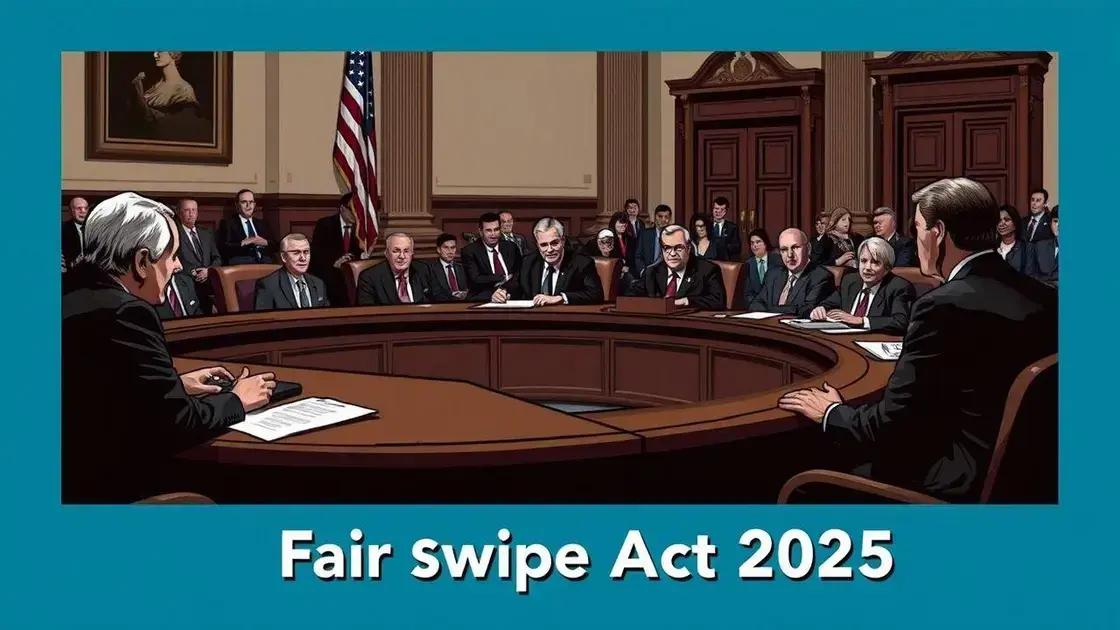Alarming reductions in federal consumer protection funding

Alarming reductions in federal consumer protection funding significantly undermine consumer rights, leading to less enforcement against unfair practices and increased risks for individuals seeking safety and fairness in the marketplace.
Alarming reductions in federal consumer protection funding could reshape the landscape for consumer rights, leaving many vulnerable. Have you thought about how this affects your everyday safety and rights? Let’s explore these critical changes.
Understanding the impact of funding cuts
Understanding the impact of funding cuts on consumer protection is crucial for everyone. These reductions can pose serious risks to consumers, affecting their rights and safety.
Key Areas Affected
When funding decreases, several areas are impacted significantly. For example, enforcement of laws becomes weaker, which means that businesses may not be held accountable for unfair practices. This can lead to increased fraud and unsafe products reaching the market.
- Consumer complaint investigations may slow down.
- Education and outreach programs could be cut.
- Funding for essential services might be reduced.
Moreover, without adequate funding, advocacy groups struggle to voice the needs of consumers. Their ability to fight for stronger laws and regulations diminishes, leaving consumers unprotected. This is evident when we look at how organizations have historically played a role in shaping consumer rights.
Consumer Insecurity
As funding cuts roll out, the feeling of insecurity among consumers grows. Many worry about the quality and safety of the products they buy and the services they use daily. This anxiety is exacerbated when consumer protection agencies lack resources to properly investigate issues. People may remain silent about their problems, thinking no one will listen or help.
It’s essential to consider how these cuts will affect not just individual consumers but also the community at large. Lower funding can lead to broader trends that undermine public trust. When consumers face uncertainty in their protections, it can lead to a feeling of helplessness.
In conclusion, recognizing the serious consequences of funding cuts helps clarify the need for better support systems and advocacy. Staying informed on these issues empowers everyone to push for the protections they deserve.
Key areas affected by consumer protection changes
Key areas affected by consumer protection changes show how significant funding cuts can impact everyday life. When resources are reduced, several vital aspects of consumer safety may suffer.
Enforcement of Laws
One of the main areas impacted is the enforcement of existing consumer protection laws. Without adequate funding, agencies struggle to monitor businesses properly. This can lead to unfair practices going unchecked, making it easier for companies to exploit consumers.
- Investigations into complaints may take longer.
- Fewer inspections can mean more unsafe products on the shelves.
- Prosecuting fraudulent companies becomes less frequent.
Additionally, funding cuts can limit educational outreach efforts. Consumers need to be informed about their rights and how to protect themselves. When support for these programs dwindles, they may not receive essential information about safe practices or recent scams.
Support for Vulnerable Groups
Another critical area affected is support for vulnerable populations. Many low-income families rely on government protections to ensure fair treatment in the marketplace. When those protections wane, these groups face a higher risk of exploitation.
Furthermore, cuts may mean reduced resources for agencies that help these consumers navigate their rights. This can leave them feeling isolated and confused, lacking the necessary tools to advocate for themselves.
The lack of available resources not only leads to frustration among consumers but also contributes to a rising sense of insecurity. As funding diminishes, the trust in regulatory bodies may also decline, leading to widespread consumer anxiety.
Reactions from advocacy groups

Reactions from advocacy groups highlight the serious concerns surrounding funding cuts in consumer protection. Many organizations that represent consumer interests have voiced their worries about what these changes mean for everyday individuals.
Increased Outcry
As the news of the funding cuts spread, advocacy groups quickly began to mobilize. They organized campaigns to raise awareness among the public and lawmakers. These efforts are crucial because the more people know about consumer protection issues, the more pressure there is on decision-makers to act.
- Social media campaigns have become a powerful tool for advocacy.
- Petitions call for the restoration of funding to consumer protection agencies.
- Coalitions form between different groups to amplify their voices.
Many advocacy groups emphasize that consumers deserve to be protected from unfair practices. They argue that cutting these funds limits the ability of regulators to do their jobs effectively. This reduction could lead to a rise in fraud and unsafe products entering the market, leaving consumers at risk.
Collaboration and Education
In response to these challenges, many organizations are collaborating with each other to strengthen their positions. This unity helps them share resources and ideas, making their initiatives more effective.
Moreover, education plays a vital role in their response. Advocacy groups are working hard to inform consumers about their rights and how to report issues they face. By doing so, they empower consumers to take an active role in protecting themselves.
The increased tension created by these funding cuts has fostered a sense of urgency among advocacy groups. They recognize that without immediate action, consumer protections could be significantly weakened, leaving many individuals vulnerable in their daily lives.
State-level responses to federal funding changes
State-level responses to federal funding changes reflect varying approaches to protecting consumers. As federal funding for consumer protection agencies decreases, many states are stepping up to fill the gaps.
Increased State Funding Initiatives
Some states are allocating more resources to their own consumer protection offices. This proactive approach helps maintain essential services, even if federal support dwindles. By increasing their budgets, states can continue to enforce important laws.
- Enhanced consumer complaint hotlines.
- Additional funding for investigations of unfair practices.
- Strengthened public outreach programs.
This shift means that consumers in those states can still access help and information. As a result, states are showing that local governance can be a strong advocate for consumer rights.
Legislative Actions
Many states are also responding through new legislation. They are introducing bills that aim to protect consumers more effectively in light of the reduced funding. These measures often focus on areas like fraud prevention and data privacy.
Advocacy groups play a crucial role in these efforts. They work with lawmakers to push for effective legislation that supports consumers. By combining their resources, these groups and state officials can create meaningful changes.
Additionally, state responses may include forming task forces to examine consumer issues in more detail. This allows them to provide targeted solutions that address specific problems affecting their residents.
This commitment at the state level helps reassure consumers. It shows that even when federal funding is reduced, local initiatives can lead to better protections and services.
What consumers can do to protect themselves
What consumers can do to protect themselves is vital knowledge, especially with recent funding cuts affecting federal consumer protection agencies. There are several proactive steps that individuals can take to safeguard their rights and well-being.
Stay Informed
The first step is to stay informed about consumer rights. Understanding what protections are available helps consumers recognize when their rights are being violated.
- Regularly check reputable consumer advocacy websites.
- Follow local news for updates on consumer protection issues.
- Sign up for newsletters from trusted consumer protection organizations.
Knowledge empowers consumers, making them aware of potential scams and unsafe products. When consumers know their rights, they can act more confidently.
Report Issues
Another essential action is to report any problems encountered with products or services. By voicing concerns, consumers alert authorities to potential violations. This helps in more effective enforcement of existing laws. Consumers can report issues to:
- Consumer protection agencies.
- Local Better Business Bureau (BBB) offices.
- Online platforms that track consumer complaints.
Engaging in this way contributes to a bigger picture, as collective reporting can lead to more significant action against offending businesses.
Additionally, consumers should consider sharing their experiences on social media. Doing this raises awareness among peers and encourages others to be vigilant.
Lastly, practicing good consumer habits is vital. Always read reviews before making a purchase, and be wary of deals that seem too good to be true. Protecting oneself starts with informed decision-making and cautious behavior.
In conclusion, understanding the impact of federal funding cuts on consumer protection is crucial for everyone. Consumers can take various steps to safeguard their rights and well-being. Staying informed, reporting issues, and practicing good consumer habits are essential actions. Advocacy groups play a vital role in pushing for better protections. By working together at local and state levels, everyone can contribute to a stronger consumer protection framework. The dialogue around these issues fosters greater awareness and empowers consumers to protect themselves effectively.
FAQ – Frequently Asked Questions about Consumer Protection
What are the main effects of federal funding cuts on consumer protection?
Federal funding cuts can weaken enforcement of consumer protection laws, leading to less oversight and greater risks for consumers.
How can consumers educate themselves about their rights?
Consumers can stay informed by following reputable advocacy groups, reading consumer rights literature, and subscribing to relevant newsletters.
What should I do if I encounter a problem with a product?
If you have an issue with a product, report it to consumer protection agencies, and consider sharing your experience to warn others.
How can I support consumer advocacy efforts?
You can support advocacy efforts by joining organizations, participating in campaigns, and spreading awareness about consumer rights.






